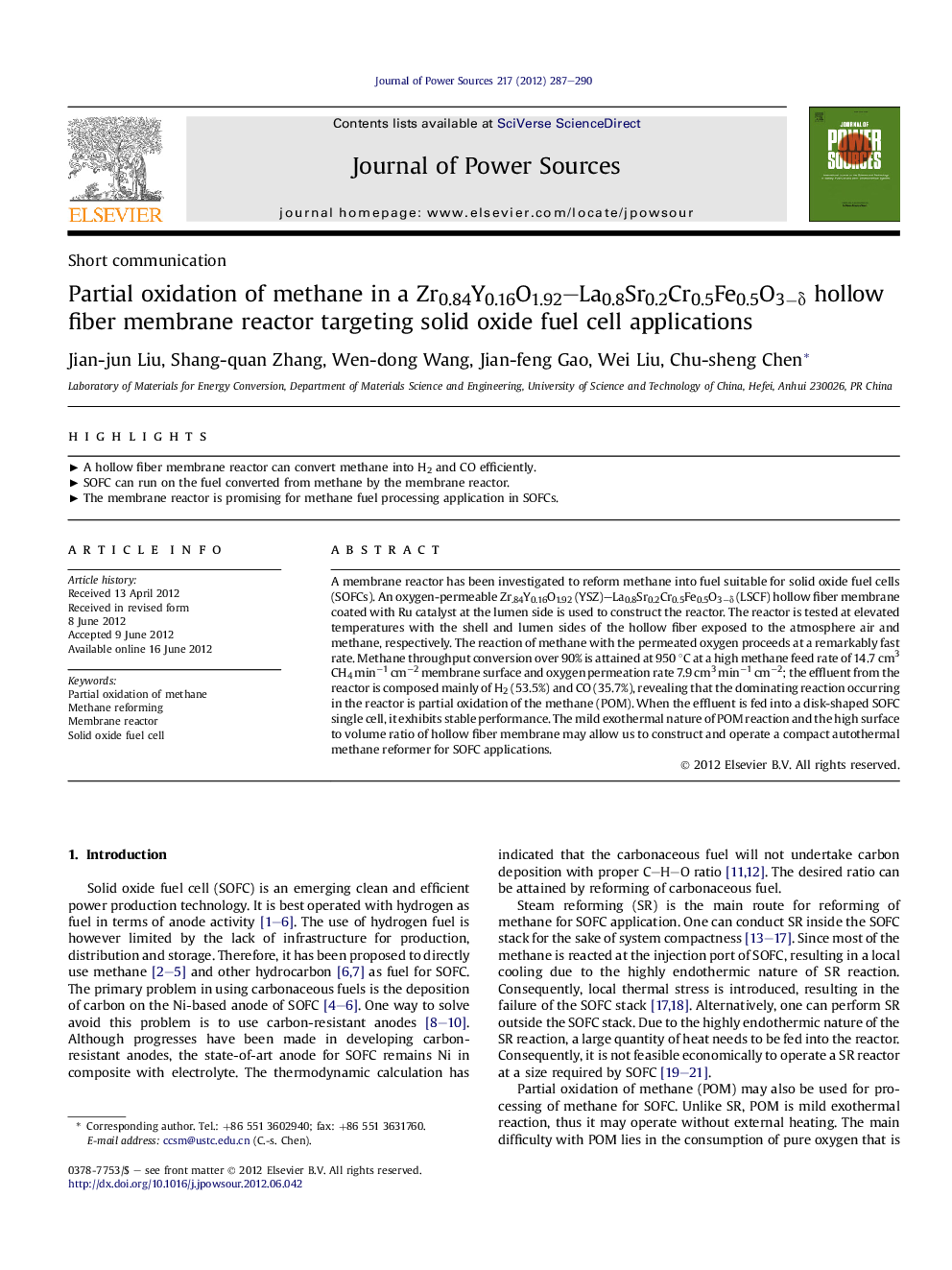| کد مقاله | کد نشریه | سال انتشار | مقاله انگلیسی | نسخه تمام متن |
|---|---|---|---|---|
| 1284443 | 1498015 | 2012 | 4 صفحه PDF | دانلود رایگان |

A membrane reactor has been investigated to reform methane into fuel suitable for solid oxide fuel cells (SOFCs). An oxygen-permeable Zr.84Y0.16O1.92 (YSZ)–La0.8Sr0.2Cr0.5Fe0.5O3−δ (LSCF) hollow fiber membrane coated with Ru catalyst at the lumen side is used to construct the reactor. The reactor is tested at elevated temperatures with the shell and lumen sides of the hollow fiber exposed to the atmosphere air and methane, respectively. The reaction of methane with the permeated oxygen proceeds at a remarkably fast rate. Methane throughput conversion over 90% is attained at 950 °C at a high methane feed rate of 14.7 cm3 CH4 min−1 cm−2 membrane surface and oxygen permeation rate 7.9 cm3 min−1 cm−2; the effluent from the reactor is composed mainly of H2 (53.5%) and CO (35.7%), revealing that the dominating reaction occurring in the reactor is partial oxidation of the methane (POM). When the effluent is fed into a disk-shaped SOFC single cell, it exhibits stable performance. The mild exothermal nature of POM reaction and the high surface to volume ratio of hollow fiber membrane may allow us to construct and operate a compact autothermal methane reformer for SOFC applications.
► A hollow fiber membrane reactor can convert methane into H2 and CO efficiently.
► SOFC can run on the fuel converted from methane by the membrane reactor.
► The membrane reactor is promising for methane fuel processing application in SOFCs.
Journal: Journal of Power Sources - Volume 217, 1 November 2012, Pages 287–290